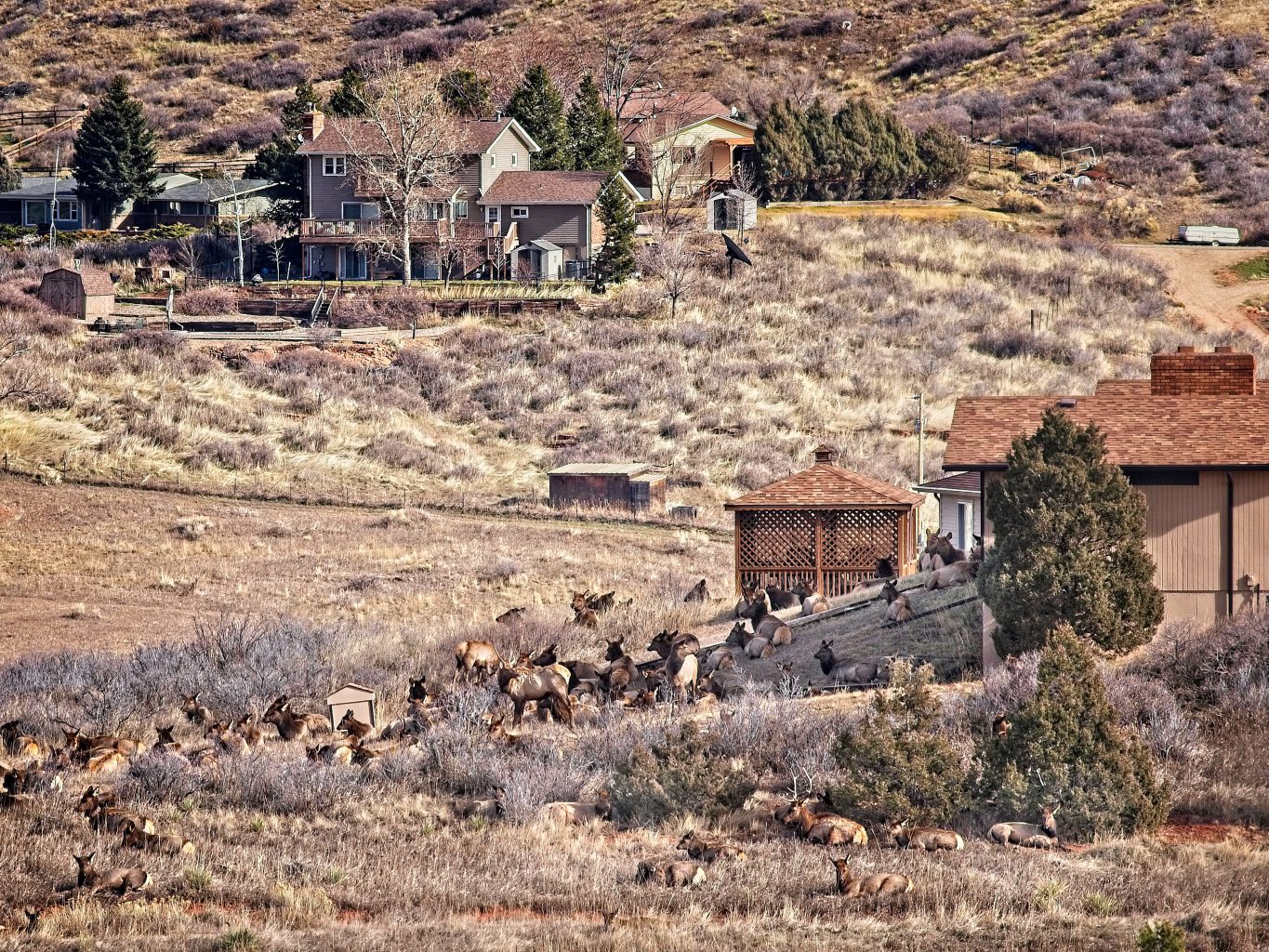By Dennis Smith
Urban wildlife can be a blessing or a bane depending on who you are, where you live and what you do. Every town has its share of city-dwelling critters — from mice to moose — and ours is no different. Most of us probably have squirrels, cottontail rabbits and songbirds in our backyards with the occasional fox, coyote or family of raccoons making a random appearance. Deer, elk, black bears and, more rarely, mountain lions, may show up on the fringes of some towns.
Many of these sightings are temporary, seasonal in nature or short-lived and, for the most part, provide us with a bit of spontaneous excitement and enjoyment. But if some of these animals take up full-time residence in a neighborhood, conflict can result.
A gorgeous red fox hung around our neighborhood for nearly three years. We have photos of him eating a rabbit on our front lawn, snoozing on our compost pile and curled up under the clothes dryer vent one bitter winter day. Most of us in the neighborhood thought of him as a kind of pet, but the lady down the street who kept a backyard flock of laying hens didn’t see things that way, nor did her neighbor who raised rabbits.
It’s not unusual this time of year to see a few letters in the local paper from people complaining that some “evil hunter” just shot an elk at the southwest edge of town. Nearly 300 elk migrate through that area each year and many have taken up permanent residence. Some folks have understandably come to view them as neighborhood pets and derive hours of enjoyment from watching them, but there are just as many others who suffer extensive losses to their yards, vegetable gardens, livestock, fruit trees and fences.
My son’s neighbor spent several thousands of dollars erecting a 9-foot-high fence around his property to keep the big deer from destroying his rare ornamentals and flower gardens. A horse was gored to death by a rutting bull elk out there a while back.
Those who are quick to criticize hunters for culling these urban elk herds probably don’t realize that they do so legally with permission from — and at the request of — the landowner. It’s definitely not hunting in the traditional sense, but then again these aren’t your usual wild elk. They’re urban elk, acclimated to human presence. OK, they’re fascinating, but they can also be unpredictable, destructive and potentially dangerous. Some of us see them as pets, others as pests. It just depends on who you are and where you live.
Dennis Smith is a freelance outdoors writer and photographer whose work appears nationally. He lives in Loveland.

